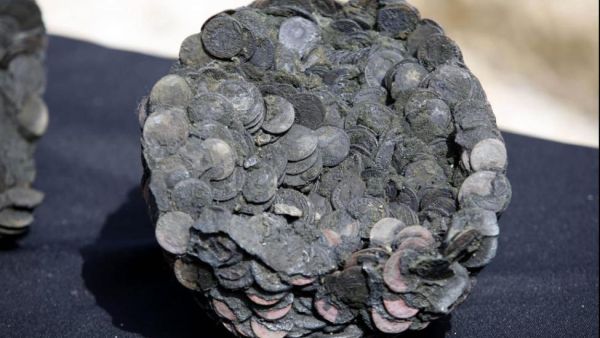One of the largest Roman shipwrecks ever discovered in the Mediterranean Sea dates back some 2,000 years, and archaeologists detailed their findings in a report released Monday.
The scientists said about 6,000 terra cotta pots the ship carried have been found at the site in the eastern Mediterranean. The pots, known as amphorae, appeared to be in a "good state of preservation" and the shipwreck site itself could contain a wealth of information such as trade, shipping routes and construction.
The location was initially surveyed and assessed in 2013-14. Researchers determined that the shipwreck dates from 100 B.C. to 100 A.D. and consider it "to be of significant archaeological importance."
The ship was mammoth, according to the standards of the time. While most ships in that era were built in the range of 50 feet long, researchers found this ship to be 110 feet long.
George Ferentinos, an archaeologist from the University of Patras and one of the researchers on the project, said DNA techniques could be used to determine what the pots contained, possibly wine, olive oil, nuts, wheat or barley. He cautioned, though, attempting to retrieve the pots would be a "very difficult and costly job."
Ferentinos and his colleagues published their findings in the January 2020 edition of the Journal of Archeological Science.
The researchers said while the site could reveal a great deal of information about the times, they now worry about scavengers and tourists who may ruin the pristine site.
"The shipwreck, on one hand, covers a wide range of values such as scientific, cultural, socio-economic and educational, but on the other hand lies in an area of continuously fast-growing tourism, which affects all the above intrinsic values if protective measures are not taken very soon," the researchers wrote in the journal.
This article has been adapted from its original source.








